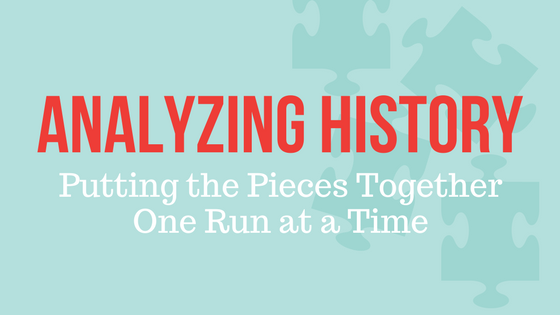Dr. Angie Ambers is a full-time forensic geneticist for the UNT Center for Human Identification, specializing in characterization and identification of contemporary, historical, and archaeological human skeletal remains. She’s written a few articles for the ISHI blog detailing how she’s been able to obtain DNA profiles from historical remains, such as an American Civil War guerrilla scout, and 140 year-old remains discovered in Deadwood, South Dakota.
In her latest article, Improved Y-STR Typing for Disaster Victim Identification, Missing Persons Investigations, and Historical Human Skeletal Remains, Dr. Ambers explained how lineage-based Y chromosome markers could provide additional data to support or refute putative familial relationships.
Today, Dr. Ambers is sharing her most recent work.
Dr. Ambers: I am currently working on an interesting historical case involving several sets of skeletal remains associated with the last expedition of the French explorer La Salle. In 1684, French King Louis XIV sent La Salle across the ocean with four ships to find the mouth of the Mississippi River. During the journey, La Salle lost ships to pirates and disaster.
In 1686, La Belle (the one remaining expedition ship), wrecked in a storm and sank in the Matagorda Bay off the coast of Texas, where it rested undisturbed for over 300 years. In 1996, Texas archaeologists located the 17th century ship and began a decades-long process of excavating the ship and recovering its contents.
I’m working with the Texas Historical Commission and the Summerlee Foundation to perform DNA analyses on human skeletal remains recovered from the shipwreck and Fort St. Louis, the French colony established by the shipwreck survivors (who were massacred by local Indians).
Based on diaries, historical records, and collaborations with French historians, archaeologists from the Texas Historical Commission have some leads regarding the identities of the deceased individuals. The goal of the DNA testing is to provide positive identification and link the skeletal remains to living descendants.
To date, I’ve had great success using Yfiler™ and Yfiler™ Plus on two adult male skeletons recovered from the La Belle shipwreck. Male members of the archaeological team who previously handled the remains provided reference samples for comparison and all were excluded as contributors. This year I’m hoping to move forward with massively parallel sequencing (MPS) on these samples to obtain additional genetic information.
This technology holds enormous promise for human remains cases. In terms of DNA extraction methods for skeletal remains, we often elute in smaller volumes in an effort to concentrate DNA and have sufficient genetic material for downstream analyses. In the past, if data for a variety of different markers was desired (e.g., autosomal STRs, Y-STRs, mitochondrial DNA), that small elution volume had to be spread amongst several different assays. This limited the amount of data that can be obtained from a single DNA extract.
With the advent of MPS, substantially more genetic information can be obtained from the same initial quantities of DNA compared to that of current CE-based analyses. With its capacity for simultaneous analysis of a multitude of different types of DNA markers, MPS technology holds promise for characterization of historical and archaeological remains.
In addition, in mass disasters or other types of cases where reference samples are not available/known, genetic markers such as ancestry-informative and phenotype-informative SNPs can provide data for craniofacial reconstructions that could be useful for positive identification.
ISHI: How did you get interested in this work? Why did this particular project appeal?
Dr. Ambers: Since childhood I have been fascinated with bones and their ability to survive for long periods of time after death. I grew up in Knoxville, Tennessee where renowned forensic anthropologist Dr. William Bass started our country’s first body farm to study human decomposition. His research sparked my interest in the forensic science discipline. When I started to seriously consider pursuing a doctorate, I struggled initially to choose between molecular biology/genetics and forensic anthropology because I have passionate interests in both subject areas. I am forever grateful to my mentors Dr. Bruce Budowle (former FBI DNA scientist; pioneer of forensic genetics; Director, UNT Center for Human Identification) and Dr. Harrell Gill-King (Director, UNT Center for Human Identification’s Laboratory of Forensic Anthropology) for nurturing these dual interests and allowing me to explore ways to “marry” the two disciplines together. As such, I started my doctoral career performing DNA analyses on human skeletal remains, with a focus on developing successful methods for accessing the wealth of genetic data encompassed within their microstructure.
In addition to having dual interests in genetics and forensic anthropology, I also am a history buff and a strong advocate of efforts to identify war remains and victims of human rights violations (e.g. from mass graves, genocide). I’m fortunate to have had the opportunity to work on numerous historical and archaeological skeletal remains cases. It is exceptionally intriguing to investigate the molecular signatures of those who lived long ago….to work on the remains of those who actually made history in some manner, or whose remains were lost, hidden, or forgotten with the passage of time. We can learn so much from skeletal evidence. Together with written and cultural records, bones and teeth unlock a more intimate way to look at events and people of the past.
WOULD YOU LIKE TO SEE MORE ARTICLES LIKE THIS? SUBSCRIBE TO THE ISHI BLOG BELOW!


